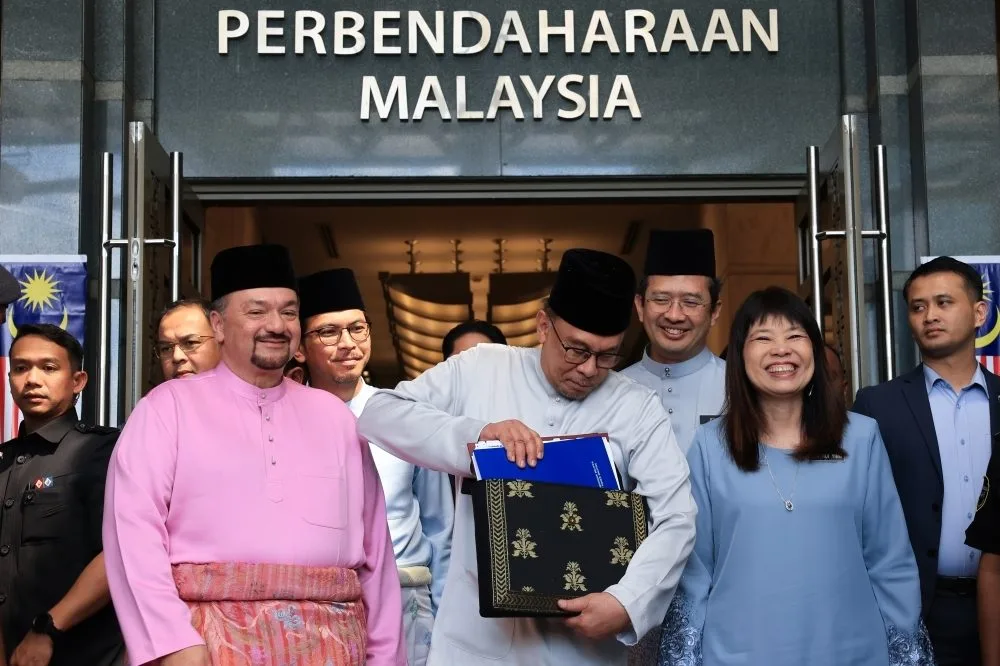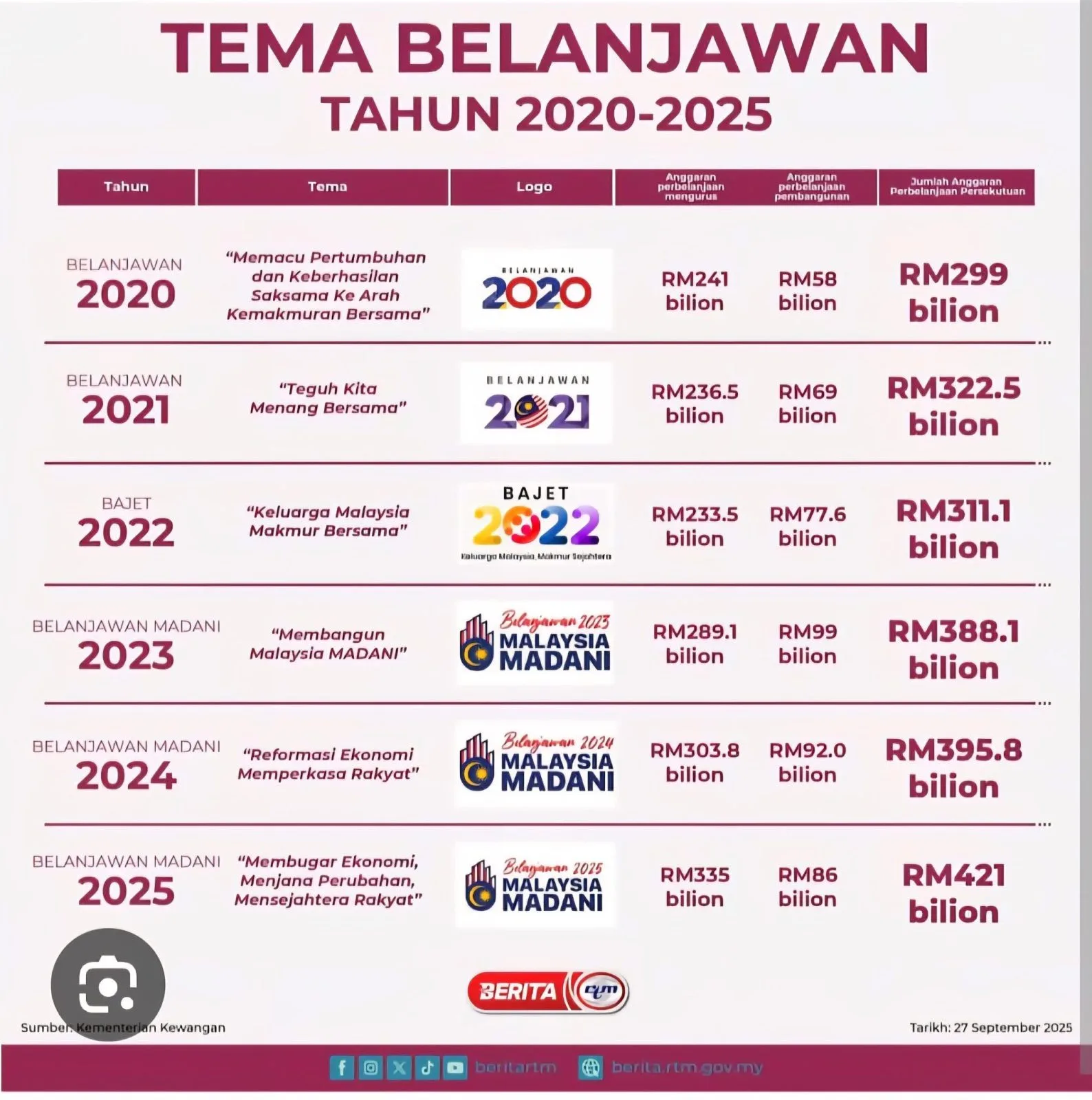Budget 2026 Malaysia: What Businesses Need to Know
Malaysia’s Budget 2026 drives digital compliance, AI adoption, and sustainable growth — guiding businesses to modernise and stay competitive.

Malaysia’s Budget 2026, announced on October 10, 2025, delivers a clear message to businesses: prepare for a year of compliance, digitalisation, and disciplined growth. Guided by the MADANI Economy Framework, this budget focuses less on short-term stimulus and more on equipping businesses with the tools, financing, and incentives needed to modernise operations, enhance competitiveness, and strengthen resilience.
With GDP growth targeted between 4.0% and 4.5% and the fiscal deficit narrowed to 3.5%, Budget 2026 prioritises structural reforms that encourage digital transformation, AI adoption, and sustainable growth — setting the tone for Malaysia’s next economic chapter.

Key Highlights at a Glance
Focus Area | Initiative | What It Means for Businesses |
|---|---|---|
E-Invoicing Rollout (2026) | Nationwide rollout confirmed; includes stamp duty self-assessment | All businesses must integrate their OMS, POS, and accounting systems with LHDN’s Peppol-ready framework. |
SME Financing Access | RM30b SJPP guarantees and RM1b under GTFS 5.0 | Greater access to long-term capital for automation, green projects, and digital upgrades. |
TECHAD Fund (RM300m) | Low-interest loans for SME technology adoption | Ideal for OMS, WMS, AI forecasting, and CRM system improvements. |
AI & Cloud Infrastructure (RM2b) | Sovereign AI Cloud by MCMC | Builds local AI capability and secure hosting for analytics and automation tools. |
Workforce Upskilling | 50% additional tax deduction for AI and cybersecurity training | Encourages SMEs to future-proof their teams. |
Tourism & Domestic Demand | RM1,000 personal tax relief for local travel | Stimulates retail and F&B spending during Visit Malaysia 2026. |
Alcohol Excise Duty +10% | Effective 1 Nov 2025 | F&B and hospitality businesses must adjust pricing and margins. |

Digital Compliance: The New Business Standard
The full e-invoicing rollout in 2026 marks a historic shift in how Malaysian businesses manage transactions and reporting. Beyond compliance, it’s a transformation that promises greater transparency, accuracy, and operational efficiency.
What Businesses Should Do:
- Integrate e-invoicing across OMS, POS, and accounting systems before mid-2026.
- Automate credit notes, returns, and payment reconciliation.
- Prepare for stamp duty self-assessment and adopt MyDigital ID integration to strengthen authentication in online transactions.
- Companies that act early will benefit from cleaner data, faster audits, and stronger credit profiles — giving them a compliance advantage that can be monetised through efficiency gains.
Financing Growth Through Innovation
Budget 2026 expands financing access for businesses investing in technology and sustainability.
- SJPP Loan Guarantees (RM30b): Up to 80% coverage for SMEs in high-tech, halal, tourism, and manufacturing sectors.
- GTFS 5.0 (RM1b): Supports green initiatives such as solar panels, EV fleets, and energy-efficient warehousing.
- TECHAD Fund (RM300m): Offers up to RM10m per company for automation, OMS/WMS upgrades, and AI integration.
- CoSIF (RM200m) and MyCIF (RM30m): Provide equity crowdfunding and peer-to-peer financing support for digital SMEs and startups.
- These financing options shift focus from relief to reinvestment — encouraging businesses to innovate, scale, and compete globally.
AI, Cloud, and Workforce Development
AI adoption is now central to Malaysia’s growth strategy. With RM2b allocated to build a Sovereign AI Cloud, local businesses will soon have access to domestic AI infrastructure that supports data privacy and cost efficiency.
Available Incentives:
- RM53m AI adoption grant (via MDEC) for SMEs deploying AI in forecasting, marketing, and customer support.
- 50% additional tax deduction for AI and cybersecurity training under the National AI Office.
Real-World Examples:
- Retailers can use AI to personalise promotions and manage stock in real time.
- FMCG brands can optimise supply chain routes and predict demand by region.
- Service providers can deploy chatbots and automated reporting tools to improve customer experience.

Tourism, Consumption, and Market Outlook
With Visit Malaysia 2026 around the corner, consumer-facing industries are expected to gain momentum. The RM1,000 personal tax relief for local travel and RM700m tourism fund are expected to fuel domestic spending.
Impact Areas:
- Retail & F&B: Expect stronger sales in Q3–Q4 2026 as travel and events increase footfall.
- FMCG: Leverage demand spikes through bundle promotions and themed campaigns tied to national tourism events.
- Hospitality: Upgrade digital booking and payment systems to align with tourism fund criteria.
- Meanwhile, the 10% excise duty hike on alcohol will pressure F&B pricing structures. Businesses can counter this by diversifying into premium non-alcoholic offerings or repositioning products to capture health-conscious segments.
Logistics and Infrastructure Modernisation
While less publicised, infrastructure upgrades remain a crucial enabler for business growth:
- NBCT side-track extension: Improves cargo handling and throughput for northern exporters.
- Airport logistics upgrades: Reduce dwell time for perishables and high-value goods.
- AgriTech and cold-chain funding (RM2b): Supports modern warehousing and temperature-controlled logistics — especially relevant for food producers and distributors.
- Improved logistics will strengthen Malaysia’s position as a regional distribution hub, lowering costs for eCommerce and FMCG players.

Editorial Perspective: From Compliance to Competitiveness
Budget 2026 rewards readiness. Businesses that digitalise early, adopt AI tools, and embrace sustainability will find themselves ahead of both policy requirements and competitors.
For Malaysia’s retail, eCommerce, and FMCG sectors, the budget offers a roadmap — not a quick fix. It’s a call to invest now in capabilities that will define long-term growth: compliance, data-driven decision-making, and cross-border expansion.